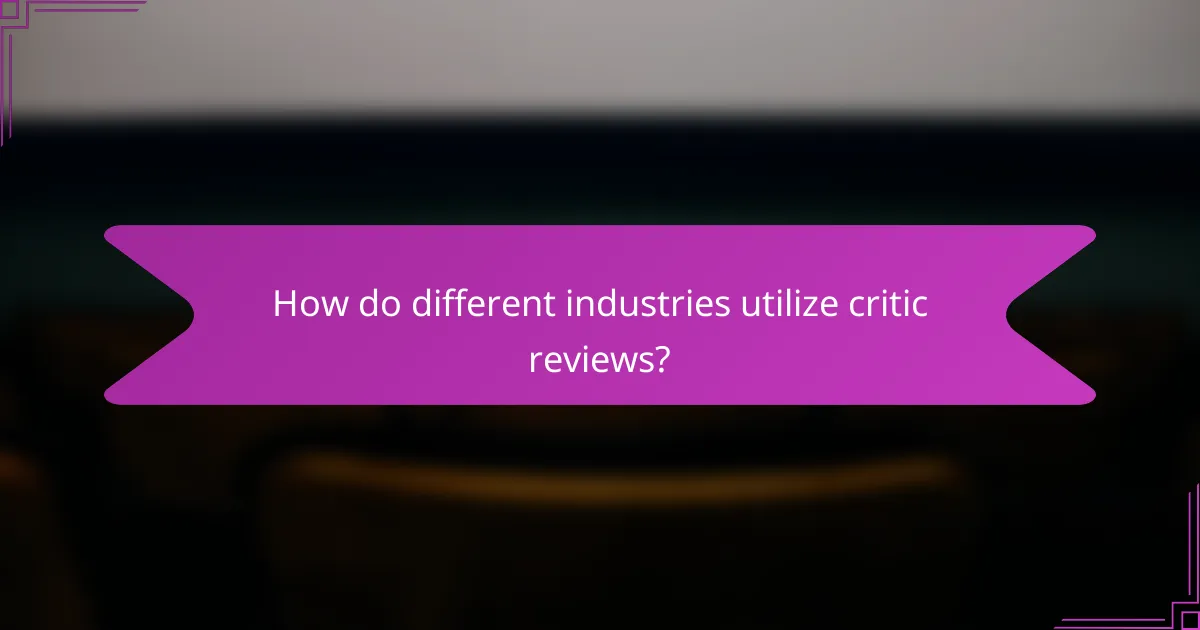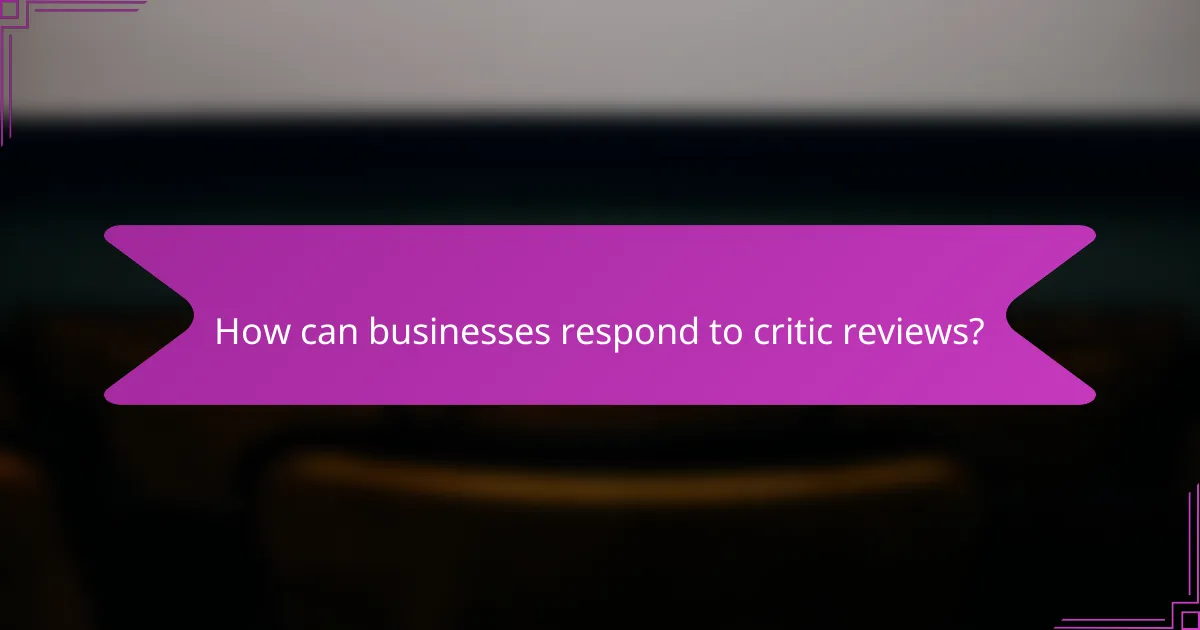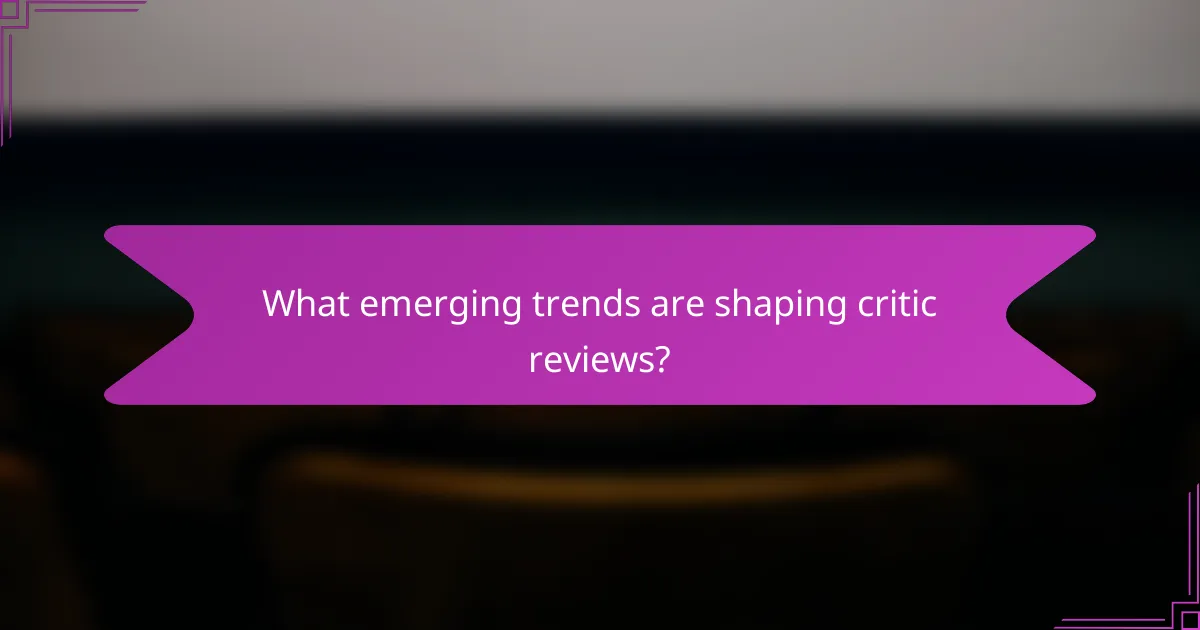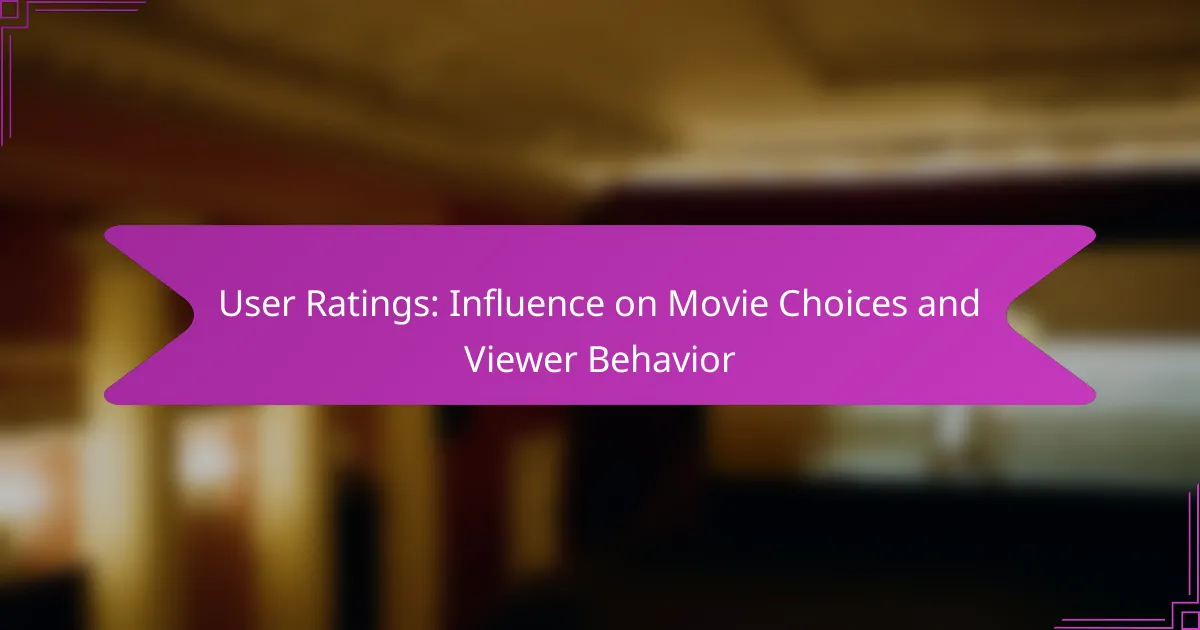Critic reviews play a crucial role in shaping public perception by offering expert insights that can either affirm or challenge consumer expectations. These evaluations guide potential audiences in their decision-making processes, ultimately influencing their engagement with various products and services. Factors such as the reviewer’s credibility, the publication platform, and the audience demographics further affect how these reviews are received and interpreted.

How do critic reviews influence public perception?
Critic reviews significantly shape public perception by providing expert opinions that can validate or challenge consumer expectations. These reviews often serve as a guiding light for potential audiences, influencing their decisions on whether to engage with a product or service.
Impact on consumer trust
Consumer trust is heavily influenced by critic reviews, as positive evaluations can enhance credibility while negative reviews may lead to skepticism. When critics endorse a product, it can reassure consumers about its quality and value, making them more likely to purchase.
For example, a film receiving rave reviews from well-known critics may attract larger audiences, while a product with poor ratings can deter potential buyers. Trust is built when critics consistently provide honest and insightful feedback.
Shaping brand reputation
Critic reviews play a crucial role in shaping a brand’s reputation, as they can either bolster or damage public perception. A series of favorable reviews can elevate a brand, positioning it as a leader in its industry, while negative feedback can lead to long-lasting reputational harm.
Brands often monitor critic feedback closely, using it to adjust marketing strategies and product offerings. For instance, a restaurant that receives a glowing review may see an increase in reservations, while a negative review could prompt management to reassess their menu or service quality.
Effect on sales and viewership
The effect of critic reviews on sales and viewership is often immediate and measurable. Positive reviews can lead to significant spikes in sales, as consumers are more inclined to buy products that have been favorably reviewed.
In the entertainment industry, a film that garners high ratings from critics can see box office revenues increase by substantial margins, sometimes reaching tens of percent higher than expected. Conversely, a poorly reviewed film may struggle to attract viewers, impacting its overall financial success.

What are the key factors in critic reviews?
Key factors in critic reviews include the credibility and expertise of the reviewer, the platform where the review is published, and the demographics of the audience consuming the review. Each of these elements can significantly influence public perception and the overall reception of a product or performance.
Critic credibility and expertise
The credibility and expertise of a critic play a crucial role in shaping how their reviews are received. Critics with a strong background in the relevant field, such as film, music, or literature, are often viewed as more trustworthy, leading to greater impact on audience opinions. For example, a film critic with decades of experience and a history of insightful analysis may sway audiences more than a newcomer.
Moreover, established critics often have a following, which can amplify their influence. Their reviews may be shared widely, affecting how a film or album is perceived even before its release. Audiences tend to pay closer attention to critics who have a proven track record of accurate predictions and insightful commentary.
Review platform influence
The platform on which a review is published can significantly affect its reach and impact. Traditional media outlets, such as newspapers and magazines, may lend more authority to a review compared to user-generated platforms like social media or blogs. Reviews from well-known publications often carry more weight and can influence public perception more effectively.
Additionally, the format of the review can matter. Video reviews on platforms like YouTube may engage audiences differently than written articles, potentially leading to varied reception. Critics should consider the platform’s audience and tailor their content accordingly to maximize influence.
Audience demographics
Understanding the demographics of the audience is essential for critics when crafting their reviews. Factors such as age, cultural background, and interests can shape how a review is interpreted and valued. For instance, a younger audience may prioritize different aspects of a film compared to older viewers, impacting their reception of the critic’s insights.
Critics should be aware of these demographic nuances and adjust their language and focus to resonate with their target audience. Engaging with specific cultural references or trends can enhance relatability and make the review more impactful for that demographic group.

How do different industries utilize critic reviews?
Different industries leverage critic reviews to influence consumer choices and shape public perception. These reviews can significantly impact sales, reputation, and overall reception of products or services.
Film industry examples
In the film industry, critic reviews play a crucial role in determining a movie’s success. High ratings from reputable critics can lead to increased box office sales, while negative reviews may deter audiences. For instance, films that receive a score above 80% on Rotten Tomatoes often see a substantial boost in ticket sales.
Critics also provide insights that help audiences understand the themes and quality of a film, influencing their viewing decisions. A well-crafted review can highlight standout performances or directorial choices that resonate with potential viewers.
Video game industry examples
In the video game industry, critic reviews are essential for guiding consumers in a crowded market. Games that receive favorable reviews from established outlets can achieve higher sales, while poor reviews can lead to disappointing launch figures. For example, titles with scores above 90% on Metacritic typically enjoy strong sales during their release week.
Critics often evaluate gameplay mechanics, graphics, and storytelling, providing gamers with a comprehensive understanding of what to expect. This feedback can influence pre-orders and ongoing community discussions about a game’s quality.
Restaurant industry examples
In the restaurant industry, critic reviews can make or break a dining establishment. A positive review from a well-known food critic can lead to a surge in reservations, while a negative review may result in a decline in patronage. Many restaurants strive for recognition in prestigious guides like the Michelin Guide, where a star rating can elevate their status significantly.
Critics assess various aspects such as food quality, service, and ambiance, offering potential diners a glimpse into the overall experience. Restaurants often use these reviews to refine their offerings and improve customer satisfaction.

What are the challenges of critic reviews?
Critic reviews face several challenges that can influence their effectiveness and credibility. These challenges include bias and subjectivity, the impact of online backlash, and changing consumer preferences.
Bias and subjectivity
Bias and subjectivity are inherent in critic reviews, as personal tastes and experiences shape opinions. Critics may favor certain genres or styles, leading to inconsistent evaluations across different works. This subjectivity can result in polarized reviews that may not align with the broader audience’s views.
For example, a critic who prefers action films may rate a drama lower than a film that aligns with their preferences. This discrepancy can mislead consumers who rely on reviews to make informed choices.
Impact of online backlash
Online backlash can significantly affect the reception of critic reviews. Social media platforms allow audiences to voice their opinions rapidly, which can lead to a swift change in public perception. A negative review may trigger a wave of criticism against the critic or the work itself, influencing others’ opinions.
For instance, if a highly anticipated film receives a poor review, fans may rally online to defend it, creating a counter-narrative that challenges the critic’s stance. This dynamic can undermine the authority of critics and complicate the review landscape.
Changing consumer preferences
Consumer preferences are evolving, often driven by cultural shifts and trends. Critics may struggle to keep pace with these changes, leading to a disconnect between their assessments and audience expectations. As viewers increasingly seek diverse and inclusive content, traditional benchmarks for quality may no longer resonate.
For example, a film that embraces unconventional storytelling might be dismissed by some critics while gaining popularity among audiences. This shift highlights the necessity for critics to adapt their criteria to reflect contemporary tastes and values.

How can businesses respond to critic reviews?
Businesses can respond to critic reviews by actively engaging with critics, utilizing their feedback for improvement, and leveraging positive reviews in their marketing strategies. These actions can help shape public perception and enhance customer relationships.
Engaging with critics
Engaging with critics involves acknowledging their reviews and responding thoughtfully. This can be done through direct replies on review platforms, social media, or even in press releases. A respectful and professional tone is crucial to demonstrate that the business values feedback.
For example, if a critic points out a specific flaw, addressing it directly and outlining steps taken to rectify the issue can build credibility. Businesses should aim to create a dialogue rather than a confrontation, which can foster goodwill among potential customers.
Utilizing feedback for improvement
Utilizing feedback from critics is essential for continuous improvement. Businesses should analyze reviews to identify common themes or recurring issues, which can inform product development or service enhancements. This proactive approach can lead to better offerings that meet customer expectations.
For instance, if multiple critics highlight a lack of customer service, a business might invest in staff training or improve response times. Regularly reviewing and acting on feedback can significantly enhance overall customer satisfaction and loyalty.
Leveraging positive reviews in marketing
Leveraging positive reviews in marketing can effectively enhance a business’s reputation. Highlighting favorable critic reviews in promotional materials, on websites, or through social media can attract new customers. This strategy builds trust and credibility, as potential customers often rely on third-party opinions.
Businesses should consider creating a dedicated section on their website for testimonials and positive reviews. Additionally, sharing quotes from critics in advertisements can provide social proof, making the business more appealing to prospective clients.

What emerging trends are shaping critic reviews?
Emerging trends in critic reviews are increasingly influenced by social media dynamics and the rise of user-generated content. These factors are reshaping how audiences perceive and engage with critiques, making them more interactive and immediate.
Influence of social media
Social media platforms have become vital channels for critics to share their reviews and engage with audiences. Critics often use platforms like Twitter and Instagram to provide real-time reactions to films, books, and other media, which can significantly impact public perception.
For example, a critic’s tweet about a movie premiere can quickly go viral, influencing viewers’ decisions before the film even hits theaters. This immediacy can create buzz or backlash, depending on the critic’s sentiments.
Rise of user-generated content
User-generated content is increasingly shaping the landscape of reviews, as audiences turn to platforms like Rotten Tomatoes and IMDb for insights. These sites allow everyday users to share their opinions, which can complement or contradict professional critiques.
This trend highlights the importance of considering both critic reviews and user feedback when assessing a film or product. Critics may need to adapt their approaches, recognizing that audience opinions can sway public reception significantly.



